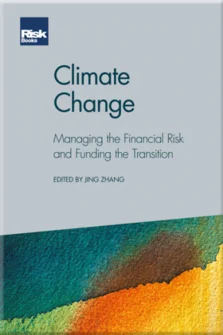Incorporating climate change in asset allocation and portfolio construction
Indrani De
Foreword
Introduction
Sustainability for critical ecosystems: The future of risk management – more of the same or a new paradigm?
Climate change is a source of financial risk
The climate disclosure landscape in the finance sector
Green boxes? An overview of climate risk tools and analytics
Embedding climate change in financial metrics
Modelling climate physical risks
Climate-related stress-testing: Transition risks
Catastrophe risk modelling and climate change
Evidence-based climate stress testing
Climate risk drives a new paradigm in risk management
Incorporating climate change in asset allocation and portfolio construction
(Car)bon voyage: The road to low-carbon investment portfolios
Climate risk primer for community banks: Concepts and policies during a period of significant change
Next-generation analytics for climate finance
Climate finance post-COP26
Mobilising private funding
Portfolio construction is both a top-down and bottom-up investment process. The starting point is asset allocation, the choice of asset class mixes and their relative weights. A simple and broad definition of asset classes would be the two parts of fixed income, rates and credit, along with equities and alternatives. Alternative asset classes used by institutional investors commonly include commercial real estate, residential real estate, farmland and commodities. Commodities, in turn, fall into two broad categories: industrial and agricultural.
Some asset classes can be differentiated based on whether they are publicly traded or in private markets – eg, listed equity versus private equity, public credit versus private credit – but their fundamental underpinnings are quite similar and are differentiated mainly by the illiquidity premium of being available in private markets only. This is a broad definition of asset classes and one can keep getting more and more granular. Once the asset allocation is done, it is possible to choose active funds, index funds or individual securities to make up the percentage of total portfolio in each individual asset class. Asset allocation is
Copyright Infopro Digital Limited. All rights reserved.
As outlined in our terms and conditions, https://www.infopro-digital.com/terms-and-conditions/subscriptions/ (point 2.4), printing is limited to a single copy.
If you would like to purchase additional rights please email info@risk.net
Copyright Infopro Digital Limited. All rights reserved.
You may share this content using our article tools. As outlined in our terms and conditions, https://www.infopro-digital.com/terms-and-conditions/subscriptions/ (clause 2.4), an Authorised User may only make one copy of the materials for their own personal use. You must also comply with the restrictions in clause 2.5.
If you would like to purchase additional rights please email info@risk.net











